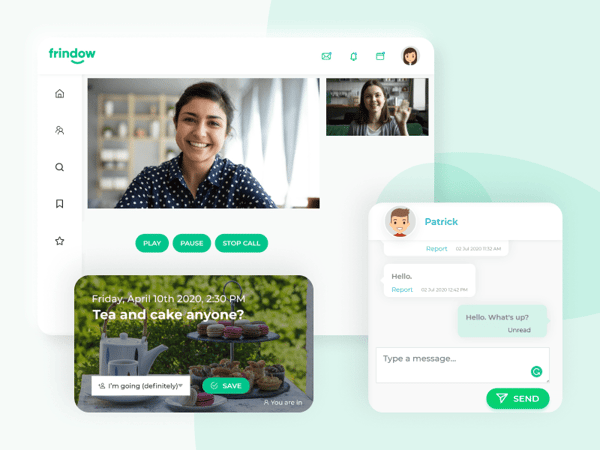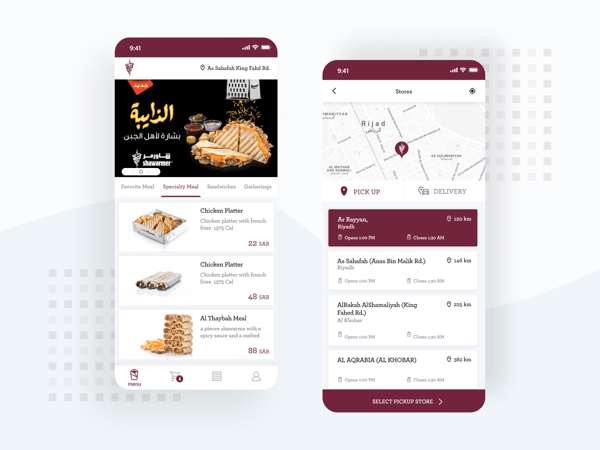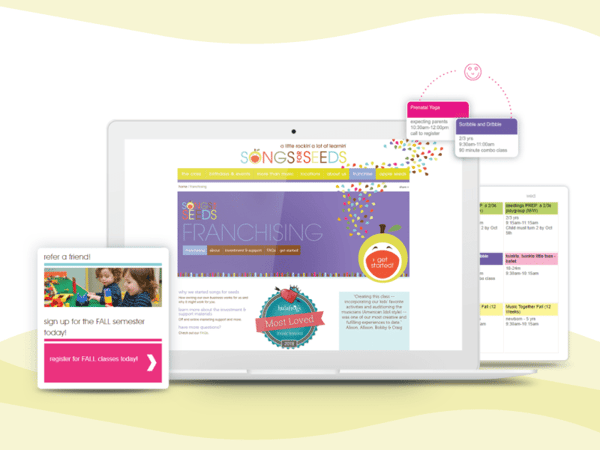As you might notice, we specialize in developing Ruby on Rails applications. Our portfolio is full of stunning web projects, and we have over 20 talented RoR developers on board. We genuinely believe that this framework and Ruby programming language are excellent choices for custom web development.
Table of Contents:
2. Why do the rumors that RoR is dead (or dying) appear?
3. Arguments that tell us that Ruby on Rails is alive and well.
3.1. Ruby on Rails is regularly updated.
3.2. Ruby on Rails community is growing.
3.3. RoR is comfortable for developers.
3.4. Large companies use Ruby on Rails as their main technology.
3.5. RoR allows for speed app development and cost-effectiveness.
4. What is Ruby on Rails used for?
4.1. Social Networking Software.
4.2. Marketing Automation Apps.
5. Is Ruby on Rails dead? Conclusion.
Introduction
From time to time, we hear the question, "Is Ruby on Rails dead?"
It is time to face that myth. I think that the best way to convince you that RoR is staying alive is to show some exciting projects written in this technology. So, check out our brand-new website that we launched just a few days ago.
How do you like it? It's fully SEO optimized, mobile-friendly, designed with the hottest UX/UI trends, fitted with a custom admin panel, and of course, developed with RoR. And you know what? We are 100% sure that it will work perfectly in a long time. Trust me, as software experts (with +11 years of experience), we would not choose the framework that is going to die soon as our leading technology.
Why do the rumors that RoR is dead (or dying) appear?
Ruby on Rails was born in 2005 and at that time, it was a unique and highly desired technology. It made a significant impact on the whole web developer community. In 2006 it was one of the most popular frameworks.
Today we hear voices that Ruby on Rails is dying or already dead. What happened?
First of all, competitive IT solutions have appeared. Secondly, Twitter moved away from it to other technologies which has negatively impacted the reputation of Rails.

Well, we need to face the truth. RoR is not a young framework anymore, and the competition is quite high. From time to time, new technologies appear, and developers compare, review, and give their opinions about them.
The criticism focuses on slow performance, scalability issues, and the fact that it is not "fresh" tech. RoR may be a little bit slower than C++ or Golang, but it is noticeable only with a large project with massive traffic. People (especially junior developers) say Ruby on Rails is not scalable enough. But we can't blame the 100% framework for that. Scalability issues can happen because of any database disturbance. Of course, we can say that Ruby on Rails is not "fresh" technology, but is it a disadvantage? Mature frameworks are well-tested, stable, and reliable.
The important thing, RoR framework is a tool in the hands of developers. It can be used correctly or incorrectly. Programming (in every technology) requires advanced skills. That's why it is essential to choose the right team with Seniors on board for the project. Yes, selecting the right people for the app development project is essential. A few weeks ago, I wrote an extended article about how to choose the best ROR developers.
Arguments that tell us that Ruby on Rails is alive and well:
It's time to face the myth: Ruby on Rails is dead or dying. Well, if you take a quick look a t our portfolio, you will notice a bunch of great projects (also fresh ones) written in this framework. So with 100% confidence, I can say Ruby on Rails is not dead or dying. Actually, it is doing quite well. Here are the reasons why:
1. Ruby on Rails is regularly updated
If the creators do not pay attention to their technology, bad things happen. You really do not want to build your app with the programming language that unexpectedly will stop being supported. Further development of the app will be impossible in that case. Fortunately for Rails, it is exactly the opposite.
Ruby on Rails is regularly updated, and every new release brings a lot of great stuff. The latest version, 6.1, focuses on adding the functionalities we need to keep web applications running for years to come. Over 650 people were involved in this update. The important thing, for many years, the core team that manages releases is stable.

2. Ruby on Rails community is growing
Our programmers indicate that a large community is a huge advantage of RoR. At the moment, there are over 4k contributors on Github. Why does the community matter? You see, custom app development is tricky sometimes. It happens that developers need a hand while finishing advanced tasks. Here comes the help of the community. There are many sources where they can look for solutions, for example, forum, StackOverflow, Reddit or RailsConf.
At Railwaymen, we take care of the balance in development teams. Each project has at least one Senior RoR Developer, so the rest of the crew can consult their code ideas if needed. This approach helps us grow, build stable teams and implement advanced features into clients' products.
3. RoR is comfortable for developers
Talking with programmers from Railwaymen showed me that they simply like coding with the Ruby on Rails framework. Even though this technology was born more than a few years ago, it is still convenient, functional, useful, and relatively easy to learn. Those factors are important to developers.
Ruby has its dedicated libraries (we call them Ruby gems). Those proven and well-tested solutions significantly improve the coding, so programmers gain valuable time. Right now, there are over 160k open-source libraries (gems) available, and this number is growing.
"Ruby on Rails is doing very well in 2025, and its unquestionable advantage is convenience. Ruby gives you the ability to create clean code that is easy to maintain and develop, which will always be its greatest asset. The argument of lower efficiency compared to competing technologies is not very important in times when we have docker and autoscaling at our fingertips."
Kazimierz, RoR Developer
4. Large companies uses Ruby on Rails as their main technology
You might ask, OK, if the Rails is so good, who actually uses RoR in the projects? I can name many well-known brands Airbnb, Shopify, SlideShare, Groupon, Twitch, Github,GitLab.
As you see, big companies do not feel afraid of "too old Ruby." Their web apps are doing well and handle a massive number of users and traffic. This brand comparison also shows us how universal technology is RoR. We can implement it in any company and any industry. According to similartech.com data, the biggest number of websites written in Ruby on Rails is concentrated in the USA.

5. RoR allows for speed app development and cost-effectiveness
With RoR, clients do not have to wait a long time for the first results. At Railwaymen, we can build MVP within 3 months and cost around $20,000-$30,000. Ruby is clear, simple, logical, and generates an optimal number of lines of code. As a result, the development process is quite speedy. Furthermore, gems (which I mentioned above) help developers save their coding time so they can focus on providing more beneficial solutions.
Time is money, especially in the app development industry. At the first stage of cooperation, software companies estimate the amount of time required to build an app. On this basis, our clients find out how much it will cost to code their app idea. The quicker developers will write the code, the lower price will be. Furthermore, Ruby on Rails is an open-source framework, so we don't have to pay for the license.
What is Ruby on Rails used for?
Ruby on Rails is a powerful technology for building web applications. It is a perfect framework if you need to quickly develop a prototype of the app (MVP). If the project does not have a stiff concept and will be developed in the future, RoR will guarantee to do that. At Railwaymen, we recommend the Agile and MVP approach because it is the most cost-effective way to build digital products. Furthermore, this framework is a universal technology that can be dedicated to any industry. Take a look at some examples from our Portfolio:
1. Social Networking Software
Frindow is a UK startup social networking platform dedicated to alleviating loneliness and isolation by encouraging new friendships based on common interests and circumstances. The goal is to get you connected and engaged with new people in the same situation as you.

2. Marketing Automation Apps
James Marketing Amplifier is a marketing automation web app dedicated to small law firms. The purpose is to help them improve their marketing to obtain more and better clients. With this online tool, law firms receive more signups from their website, acquire customers through referrals, grow and improve educational content on their blogs.

3. Construction Platforms
ProEst is cloud-based construction software that combines a large project management area and helps define special mechanisms for preparing a cost estimate for tenders. The software stores files and customize estimation and designing processes.

4. FinTech Software
CostTracker is a cloud-based platform that helps companies save time and money through total control of costs in the organization. The application is based on a real-time cost tracking feature.
![]()
5. Food Tech Apps
Shawarmer is a web and mobile application for the GCC region. This project aims to enable users to order food for pick-up from all of their Shawarmer restaurants.

6. Education Platforms
The Apple Seeds application is a big online platform. It evolved from simple classes’ scheduling & booking system into an enterprise solution that organizes the entire business, all aspects, from the presentation layer to payments & accounting.

As you can see, we can use Ruby on Rails for many purposes. Honestly, we can use it to develop any kind of web apps. Using tech that gives many code opportunities is essential when it comes to building business apps. You see, when we start a new project, clients usually have the very first version of the software. We assume that in the future the product will evolve. That's why it is important to choose the programming language and framework that will allow us to spread the wings. That's exactly what Ruby on Rails is.
Is Ruby on Rails dead? Conclusion
Although Ruby on Rails is not a young framework, it is still quite popular among developers and software companies. It is a stable and powerful tech. We find it a perfect choice to build a Minimum Viable Product that will be improved/developed in the future.
What is the future of Ruby on Rails? This framework is more than 15 years old, and nothing indicates that the creators will stop supporting it. We are expecting that in the coming years new features will be added to it.
There are many frameworks, programming languages, and technologies available on the market right now. We choose Ruby on Rails as our primary tech for web development because with RoR, we can quickly code custom solutions that answer to business needs of our clients and not exceed their budget.
Want to know more about Ruby on Rails and web development? We are experts in this field. Check how we work:
Web Development with Railwaymen







